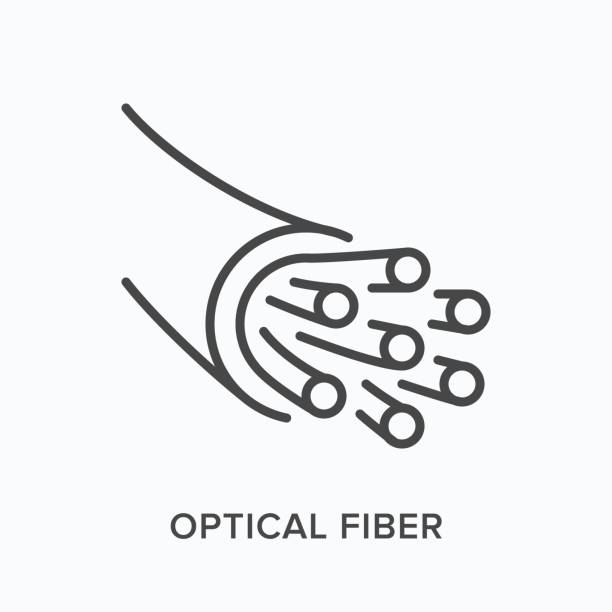Seven Benefits Of Fiber Optic Cable

The fiber optic cable is the data transmission medium that utilizes thin glass or plastic fibers to transmit information in light signals. They can transfer massive amounts of information for long distances, and extremely fast, as opposed to conventional copper cables. The following article will discuss the advantages of fiber optic cables and the revolution they've brought to the transfer of data.
Speedier Data Transfer
Fiber optic cables can be used to transfer information at a the speed of. Light signals travel much more quickly through fiber optic cables than they do through copper cables. Fiber optic cables are perfect for applications that need fast data transmission like video streaming, online gaming, and file sharing.
High Bandwidth
Apart from high-speed data transfer, fiber optic cable also offer high-bandwidth. Bandwidth refers to the quantity of data that can be transferred over an extended period of time. Fiber optic cables possess a greater bandwidth than copper cables that means they are able to transmit more data in a shorter duration. Fiber optic cables are perfect for organizations and businesses that require a regular flow of massive amounts of data.
Longer Transmission Distances
Another benefit of fiber optic cables is the capability to transfer data over longer distances over copper cables. This is due to the fact that light signals are less efficient as they travel through fiber optic cables. This allows them to travel further before needing to be amplified. Fiber optic cables are perfect for applications that require data transmission across long distances like networks or telecommunications.
Protection from interference
They are also protected from electromagnetic interference (EMI) and radio frequency interference (RFI) that can cause problems with copper cables. Fiber optic cables transmit data via light signals, not electrical signals. That means they are immune to EMI as well as RFI. Fiber optic cables are suitable for environments with high levels of electromagnetic interference such as hospitals and industrial facilities.
Greater Security
The fiber optic cables offer higher security than copper cables. Fiber optic cables offer greater security than copper cables because they are harder to detect or tap. This is due to the fact that fiber optic cables don't emit electromagnetic signals, which makes them nearly impossible to identify by tapping the cable. This makes fiber optic cables suitable for any applications that require the highest levels of security like military or government communications.
Cost Effective
Though fiber optic cables might be more costly to put in than copper cables, they can prove more economical in the long term. Fiber optic cables are much less costly to maintain and will last longer than copper cables. They are also less prone to being damaged by environmental factors such as moisture or temperature changes that can cause lengthy repairs and downtime when using copper cables.
Environmentally Friendly
The fiber optic cables are greener than copper cables. They do this because linden photonics do not contain any toxic chemical compounds or heavy metals that could be detrimental to the environment. Fiber optic cables also require less energy for data transmission than copper cables, which could help decrease overall energy use.
Bottom Line
The benefits of fiber optic cables as compared to traditional copper cable is many. They facilitate faster data transmission and higher bandwidth. They also offer longer transmission distances, immunity to interference, more security and are more cost-effective and eco-friendly. As more and more businesses and other organizations depend on fast data transfer, fiber optic cables are becoming more popular as the preferred choice for data transfer.
If you are considering upgrading your organization's information transmission system is worth taking more time to look into the fiber optic cable. Due to their many advantages and longer-term savings on costs, they are a smart option for any company or other organization that has to transmit large amounts of data quickly and securely.
